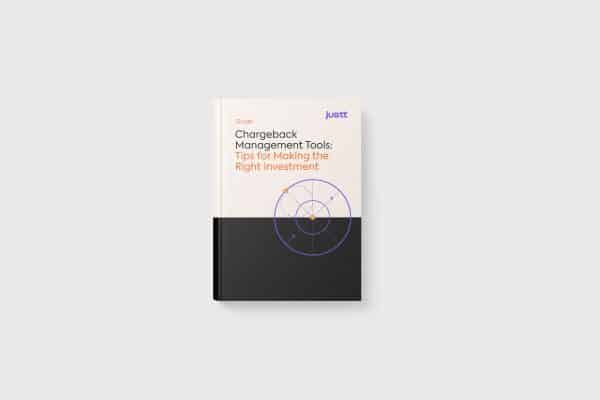Chargebacks, which began as a consumer protection mechanism, have become a complex challenge for merchants worldwide. With the continual growth of eCommerce, digital goods, and recurring payments, chargeback volumes are increasing. By 2026, annual global chargeback volume is estimated to reach 337 million, a 42% increase from 2023. In the U.S. alone, that will translate to $15.3 billion in chargebacks by 2026.
With merchants’ revenue, operations, and customer relationships at risk, this guide explores how to master chargeback management through prevention and mitigation. We’ll walk through the chargeback lifecycle, common dispute types, data-driven prevention tactics, chargeback dispute response strategies, and how to measure what really matters: net dollar recovery. Viewing chargeback management in terms of ROI, not just a back-office task, is the first step to recovering more dollars and preventing losses.
Key Takeaways
- Chargebacks are rising in cost and complexity – especially with new fee structures from Visa, Mastercard, and major PSPs.
- Disputing chargebacks with manual approaches or the use of dated tools that create templatized responses underperform due to generic responses, human error, operational overload (simply put, it takes too long to fill the templates), and a lack of analytics that uncover data driven approaches to chargeback disputes.
- Chargeback triggers vary by industry, requiring tailored prevention and evidence strategies.
- Winning more disputes requires that each dispute representment be optimized based on the actual evidence available, the reason code, the issuer, and many other factors
- Net dollar recovery, not win rate alone, is the best metric for measuring chargeback dispute program effectiveness.
Where Chargeback Strategies Break Down
Chargeback management is often resource-intensive, with merchants investing heavily in in-house dispute teams or outsourcing chargebacks to third-party vendors. But even with these investments, consistent results are not guaranteed because success hinges not only on effort, but on having a strategy that evolves in lockstep with chargeback abuse patterns and industry changes.
One of the most common challenges is when chargebacks surge, often during holiday season. In that case, responding to all chargebacks would require hiring temporary staff, which can be a financial burden on the business.
If your win rates are stagnating or if your team is struggling to scale dispute operations, you may be leaving significant revenue on the table.
Another common challenge is focusing on chargeback disputes that are relatively easier to win. This may seem like a good choice – allocating labor resources where they can deliver wins, but if the amount of labor per chargeback dispute were reduced, you could actually have better outcomes, since you would be able to dispute more chargebacks.
At the same time, the stakes are higher than ever. Recent fee changes from Visa and Mastercard may signal a change in the economics of chargebacks. Losing a dispute may now result in greater fees, making traditional, template-based approaches to chargeback disputes increasingly risky and less cost-effective. To protect margins and improve recovery, merchants must adopt a more customized, data-informed approach for their disputes.
Industry-Specific Dispute Patterns
Different verticals face unique chargeback triggers, which are important to acknowledge and account for in your strategy. For example:
- Retail faces a high risk of disputes over returns or non-delivery.
- Digital goods commonly experience “Liar buyer” claims after content is downloaded.
- SaaS & subscriptions see recurring billing disputes over “unauthorized” renewals.
- Travel incurs no-show disputes or cancellations outside refund policies.
- Gaming & crypto involve large amounts of friendly fraud from loss-induced disputes or denied wallet activity.
Understanding the most common types of disputes in your industry is the first step towards better prevention and mitigation.
Proactive Chargeback Prevention Tactics
Prevention is the first line of defense. Merchants that proactively manage fraud, operations, and customer communication significantly reduce chargeback exposure. Here, we’ll break down specific tactics you can start using immediately to lower your chargeback risk.
Communicate transparently
Provide clear product descriptions, shipping timelines, billing descriptors, and refund policies. Make this information easy to find. Buyers are increasingly used to intuitive, seamless experiences, so ensure they can reach support quickly to resolve issues before they escalate.
Analyze root causes
Review past chargeback data to identify trends. Are certain SKUs, PSPs, or countries more prone to disputes? Use those insights to adjust policies or payment flows.
Use pre-dispute alerts
Integrate with Ethoca, Verifi (CDRN and RDR) to receive early warning alerts of potential disputes. Merchants can choose to refund the customer, avoiding formal chargebacks that hurt win rates and chargeback ratios.
Strengthen fraud prevention
Leverage tools like AVS, 3DS, IP geolocation, velocity checks, and behavioral analytics to block fraud before authorization.
Mitigation: How to Win More Disputes
Even the best prevention strategy won’t eliminate chargebacks completely. That’s why effective mitigation (fighting disputes and winning them) is essential for protecting revenue.
Customize
While many chargebacks share characteristics, no two are fully alike. The card scheme, issuing bank, reason code, product type, and billing model all impact what evidence is required. While templates provide a helpful mechanism for organizing information, overreliance on them fails to account for variability. When possible, merchants should provide dynamic, tailored arguments in each dispute.
Add evidence
There are two ways to build dynamic dispute arguments. The first is manual: reviewing each chargeback one by one and assembling the complex, nuanced information needed to win. While this approach can be effective, it does not scale. As chargebacks rise, you would need to continually grow your dispute team just to keep up.
The second approach is to automate with a solution like Justt. Justt begins by systematically collecting three types of evidence: merchant-side data, PSP data, and third-party enrichment. Once the relevant evidence is gathered, the platform generates a fully customized response tailored to the specific chargeback scenario. These responses follow the appropriate formatting requirements for each card scheme and are continuously improved through historical performance analysis and A/B testing across thousands of cases.
Automate
Automation is central to Justt’s chargeback management platform. By ensuring every eligible chargeback is automatically disputed (within pre-defined policy limits), no revenue is left behind. Unlike traditional models, automation eliminates manual labor costs, tracks everything in one place, and ensures timely responses to avoid late acceptance fees. At the same time, expert human teams continually optimize the underlying automation rules, drawing on deep chargeback knowledge to adapt to evolving schemes and policies, making the system smarter over time, not merely reactive.
A Focus on Net Dollar Recovery
Many merchants use win rates as an indicator of how successful their chargeback dispute program is. While win rate is an important metric that should be tracked, it doesn’t tell the whole story. A better way to evaluate chargeback management effectiveness is net dollar recovery, which considers win rate, but also factors in dispute volume, labor costs, and chargeback and processor fees. Make sure you measure Net Dollar Recovery across all chargebacks and not only those that were disputed.
In Justt’s framework, maximizing net dollar recovery means optimizing both inputs (costs, fees, labor, volume disputed) and outputs (wins, revenue reclaimed). For more information, and to learn how to calculate your net dollar recovery, read our guide.
Adapting to Change: Strategy Amid New Fee Structures
Visa, Mastercard, Stripe, and other payment infrastructure leaders have recently introduced changes in fee structures which greatly impact the economics of chargeback disputes. To learn about these changes and what they mean for your dispute strategy, watch our recent webinar on the topic.
The net of it is that unsuccessful representments may now carry additional costs beyond lost revenue. That doesn’t mean you should dispute a smaller percentage of your chargebacks, but it does mean you need to be precise when submitting evidence to avoid additional fees. Plus, it offers more motivation to improve chargeback prevention using the strategies outlined above.
Final Thoughts
Chargeback management isn’t just about fighting disputes. It’s also about improving outcomes across the entire lifecycle. That means stopping avoidable chargebacks early, building tailored dispute responses for those that proceed, and continuously optimizing based on results.
FAQs
Why are chargebacks becoming more expensive for merchants?
Recent fee structure changes from Visa, Mastercard, and PSPs like Stripe have introduced additional penalties for losing disputes. These costs are in addition to lost revenue and operational overhead, increasing the financial stakes of every chargeback.
Is win rate the most important metric for chargeback success?
Not necessarily. While win rate is useful, net dollar recovery is a better measure. It factors in dispute volume, fees, labor costs, and the actual dollars reclaimed, providing a more complete picture of ROI.
How can I prevent chargebacks before they happen?
Use tools like Ethoca and Verifi for pre-dispute alerts, maintain transparent communication with customers, and strengthen fraud prevention with AVS, 3DS, and behavioral analytics. Analyzing past chargebacks also helps spot preventable patterns.
Do chargeback prevention strategies differ by industry?
Yes. Each industry faces distinct triggers—for example, SaaS often faces billing disputes over renewals, while travel experiences disputes from cancellations or no-shows. Tailoring your approach by vertical is key to success.
What does a dynamic dispute response mean?
It means crafting dispute responses that are customized to the specific transaction, reason code, issuer, and context. This improves win likelihood compared to generic, template-only responses.
Can AI really help with chargebacks?
Absolutely. AI platforms like Justt use enriched data and machine learning to build fully customized responses at scale. When combined with human expertise, AI boosts both efficiency and effectiveness.
How do I measure my net dollar recovery?
To calculate net dollar recovery, subtract your chargeback-related costs (dispute fees, labor, software) from the total amount recovered in successful disputes. This gives you a dollar-based view of your program’s impact.



